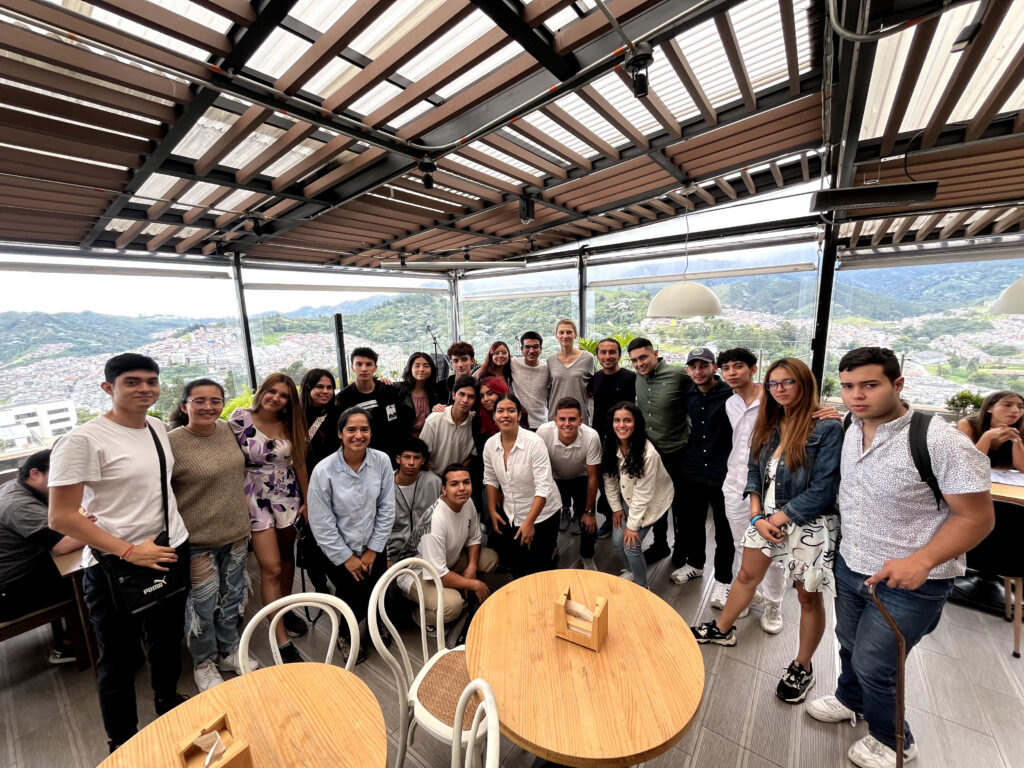Exploring Youth Engagement in Three Intermediary Cities in Colombia: Manizales, Quibdó, and Cartagena
by Catalina Duarte, LSE Cities

Colombia’s intermediary cities, defined as those with populations between 50,000 and 1 million people, display a rich diversity in their characteristics, capacities, and challenges. Among the 95 cities that fit this profile, these urban centres play a crucial role in shaping the country’s socio-economic landscape. Despite this, research on these cities remains limited. To address this gap, NextGenC developed a comprehensive dataset capturing a wide range of social and economic indicators from all intermediary cities in Colombia. This publicly available database provides valuable insights into the dynamics that shape these urban areas.
NextGenC also undertook a focused initiative, selecting three of these 95 cities for in-depth research. The goal was to identify cities where youth participation is particularly active, both through formal and informal means, and where local governments have involved young people in key decision-making processes. Our selection also aimed to represent Colombia’s diversity, offering different scenarios of youth political engagement across the country.
Key criteria included internet connectivity, institutional capacity to foster political participation, the adoption of technology-related policies, and socioeconomic factors like multidimensional poverty, higher education enrolment, and participation in the 2023 local elections. Additionally, we consolidated a database of nearly 700 youth movements across most intermediary cities and conducted social media sentiment analysis to identify standout cities.
The database on youth movements reveals some initial trends:
On average, intermediary cities have around seven youth movements, but certain cities, such as Manizales and Cartagena, stand out with 21 movements each, followed closely by Ibagué (20) and Cúcuta (19). The terms ‘group’, ‘collective’ and ‘movement’ are often used interchangeably without clear distinctions regarding their levels of formality.
Most youth movements (89.4%) actively participate in local political affairs, though the available data may have a bias toward formalized engagement. These movements typically focus on a range of issues, including political participation, arts and culture, social rights advocacy, education, and climate change. However, only half of the groups use social media, suggesting that many prefer more private digital platforms like WhatsApp and Telegram to self-organise and communicate.
Among those with an online presence, 51% use at least one social network. Facebook is the most popular platform, with 81% of groups using it, while Instagram trails at 14%. Platforms like X (formerly Twitter) and YouTube see minimal engagement, each with only 2% participation. Interestingly, youths tend to express stronger negative sentiments on social media, often targeting national figures, political institutions, and news outlets in their discussions. In terms of city-specific digital activity, youth groups are notably active online in cities like Cartagena, Palmira, Santa Marta, and Bucaramanga.
Through this careful analysis, Manizales and Quibdó emerged as two key cities. In both, the involvement of youth councils in shaping development plans provided strong indicators of a robust youth agenda for the next four years. We also considered the satisfaction of youth councillors regarding their role in outlining key priorities for the newly elected mayors (2024-2027), offering insights into the effectiveness of youth participation (at least through more formal mechanisms of participation).
Cartagena, on the other hand, stood out for its high levels of educational attainment and significant political participation in local elections. It was also the most digitally active city among the 95 cities, with a high volume of social media engagement, particularly on Twitter, between 2019 and 2021. Cartagena’s global outlook and broad network of stakeholders present a unique scenario for understanding youth engagement on a larger and more global scale.
By focusing on these three cities—Manizales, Quibdó, and Cartagena—we aim to explore the diverse pathways of youth political involvement and examine how local governments can more effectively engage younger generations. Additionally, we look forward to assessing the role of technology in these interactions, and the outcomes (whether permanent, positive, or negative) for both youth and local governments of these cities.
Stay tuned as we dive deeper into the next phase of our research, where we take a closer look at the unique dynamics within these cities. If you’re part of a youth group in any of these cities and would like to get involved, please reach out to nextgenc@despacio.org.
